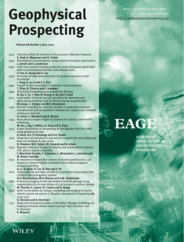
Full text loading...
 , Shuangmin Duan2
, Shuangmin Duan2 , Hongzhu Cai3,†
, Hongzhu Cai3,† , Bo Han4,‡
, Bo Han4,‡ , Yixin Ye5
, Yixin Ye5
An improved interpolation scheme is presented for 2.5‐dimensional marine controlled‐source electromagnetic forward modelling. For the marine controlled‐source electromagnetic method, due to the resistivity contrast between the seawater and seafloor sedimentary layers, it is difficult to compute the electromagnetic fields accurately at receivers, which are usually located at the seafloor. In this study, the 2.5‐dimensional controlled‐source electromagnetic responses are simulated by the staggered finite‐difference method. The secondary‐field approach is used to avoid the source singularities, and the one‐dimensional layered background model is used for calculating the primary fields excited by the source quasi‐analytically. The interpolation of electromagnetic fields at the cell nodes for the whole computational domain to the receiver locations is discussed in detail. Numerical tests indicate that the improved interpolation developed is more accurate for simulating the electromagnetic responses at receivers located at the seafloor, compared with the linear or rigorous interpolation.

Article metrics loading...

Full text loading...
References


Data & Media loading...

